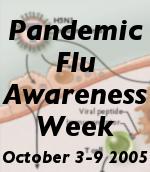Canada: WILD BIRD SURVEY DETECTS AVIAN INFLUENZA IN DUCKS
From the Canadian Food Inspection Agency:
"A national survey of wild migratory birds (ducks) has produced preliminary results indicating the possible presence of Influenza A in 28 wild ducks in Quebec and five wild ducks in Manitoba. To date, preliminary testing has identified H5 influenza. No evidence of H7 influenza has been observed."
The Canadian Government, in collaboration with the Canadian Cooperative Wildlife Health Center has been conducting a survey of wild birds for avian influenza.
It seems unlikely to me that this virus will turn out to be the highly pathogenic avian influenza A(H5N1) circulating in Asia and Eastern Europe. As noted on the web site, low pathogenic avian influenza is commonly found in wild birds, and these birds were apparently healthy.
Goes to show how "you won't find it until you look for it". It would be interesting to know how many tests have been done so far to get an idea of the prevalence. Over 4800 birds were tested in the survey, but all testing is not expected to be complete until November.
In case people are interested, Canada has developed a National Wildlife Disease Strategy, available here.
Damien



